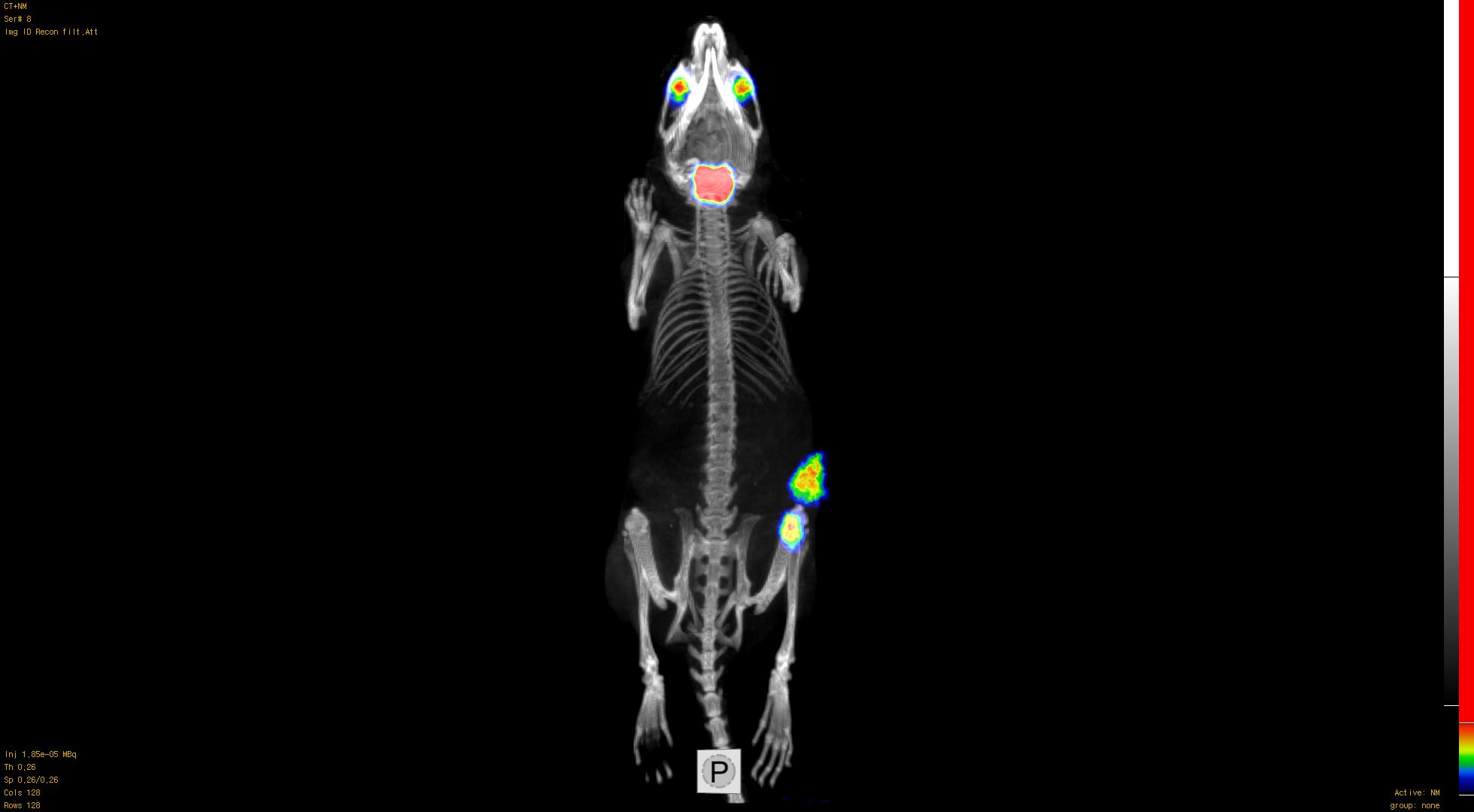Targets and tools for imaging and therapy
Ongoing projects on the original and historical targets of melanins and proteoglycans (PGs) are focused on the treatment of metastatic melanoma (mechanisms, associations and potentiation by radiosensitizers) and on the development of proteoglycan ligands for joint imaging and the targeting of chondrosarcomas (Axis 1). New markers are being explored that could serve as future targets using imaging and/or radioimmunotherapy approaches or specific inhibitors (Axis 2). Finally, in a third axis, original methodological strategies for addressing (pre-targeting) and radiolabelling are being developed (Axis 3).
Axis 1: Original targets: melanins and proteoglycans
Previous results have selected a melanin tracer ICF01012 radiolabelled with iodine 131 for targeted internal radiotherapy (TRT) of melanoma and characterized its antitumor properties (Viallard et al, 2015, 2016). Current work focuses on the role of TRT (in clinical transfer phase in team 2), in combination with current treatments such as targeted therapies and immunotherapies.
The targeting of PGs by quaternary ammonium derivatives of imaging agents and chemotherapy compounds has been validated in preclinical models of osteoarthritis and chondrosarcoma (Cachin et al., 2011; Khairnar et al., 2015, Peyrode et al, 2016;). New quaternary ammonium derivatives of compounds that can be activated in hypoxia with cleavable spacers provide additional tumour specificity (Voissière et al, 2017). Quaternary ammonium molecules are also being developed for PET imaging of cartilage pathologies (osteoarthritis/chondrosarcoma) (Patent WO2016016272 (A1), 2016).
Im 
SPECT imaging of compound [125I]ICF01012
Axis 2: New TIP60/ANXA1/MCT targets
This prospective component includes fundamental research related to the aggressiveness of cancers and targets previously described. Studies of gene regulation are thus underway, highlighting certain key proteins in the different breast cancer subtypes, particularly triple negative breast cancer (TNBC) (Karshhi-Ceppioglu et al , 2017 ; Kaldoun et al , 2017). Annexin A1 (ANXA1), a protein known for its anti-inflammatory properties, is thus associated with the aggressiveness of various cancers including melanoma (Boudhraa et al, 2016a 2016b). MCT-type lactate transporters are a new target of interest in various cancer pathologies including TNBC. The aim of our project is to evaluate the relevance of radiolabelled small molecules with very good affinity and specificity for MCT1 and/or MCT4 transporters as SPECT or PET markers for prognosis. Our hypothesis is to focus on coumarins containing monocarboxylates that have recently demonstrated inhibitory effects of MCTs on lactate transport and metabolic shift in the cancer cell.
Axis 3: New strategies of radiolabeling and molecular or cellular targeting
Among the antibody pre-targeting strategies for radioimmunotherapy (RIT), we are developing bioorthogonal chemistry approaches. We have chosen the use the inverse electron demand of Diels-Alder cycloaddition between trans-cyclooctene (TCO) and tetrazine (Tz) fragments. The proof of concept was demonstrated in preclinical models of peritoneal carcinoma (Rondon et al, 2017). Our projects also focus on probe optimization using a multifunctional dendrimer. These probes will also be associated with fluorescent and/or radiosensitizing nanoparticles as part of the EBRT approach. Nanoparticles are also proposed for intraoperative monitoring of prostate cancer.

